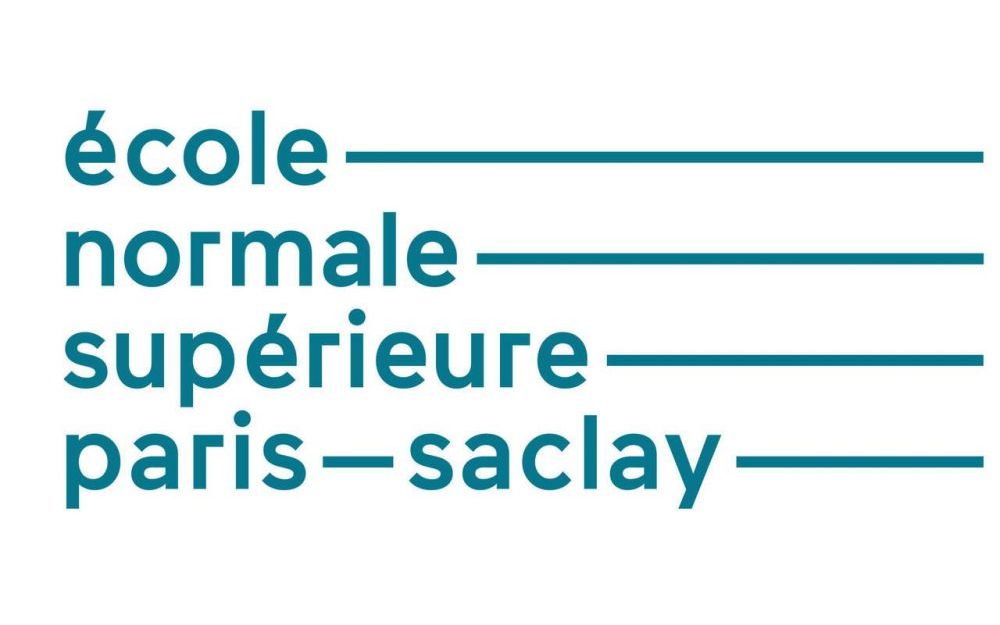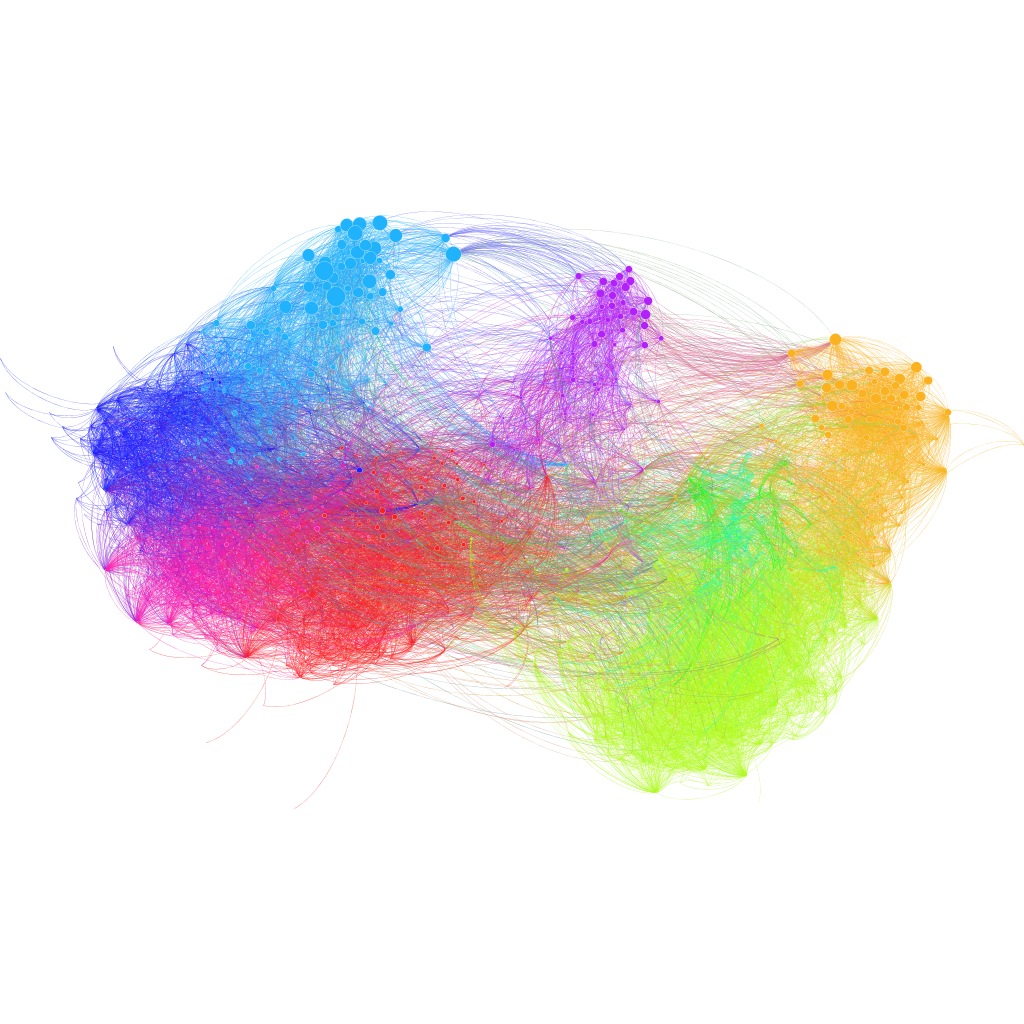
Graphs in Machine Learning - Fall 2016 - MVA - ENS Paris-Saclay
News

- 01.04.2017: Average response time on piazza was 62 minutes.
- 30.03.2017: 57 students validated the class from 2016/2017.
- 22.11.2016: The class on Monday 11/28 is at 14h-16h.
- 10.10.2016: 92 students enrolled for 2016/2017 and 16 have already started working on projects.
- 30.09.2016: 49 students validated the class from 2015/2016.
- 09.07.2016: Signup and communication managed via piazza
- 09.07.2016: For an overview, check out the lectures from Fall 2015/2016.
- 09.07.2016: The course will be presented on Friday, 30. 9. 2016.
- 09.07.2016: First class will start on 03. 10. 2016.
Administrivia
- Time: Mondays 11h-13h
- Place: ENS Paris-Saclay (different lecture halls)
- 7 or 8 lectures and 3 recitations (TD)
- Validation: grades from TD (40%) + class project (60%)
- Research: projects, interships (stages) and PhD. thesis at SequeL and elsewhere possible
- Piazza: Registration and online class discussion on piazza.
- TA: Daniele.Calandriello#inria.fr, TA's website
- course description at MVA at ENS Paris-Saclay
- MVA tags: content: #apprentissage, type: #méthodologique #théorique, validation: #projet #td
Main topics
- spectral graph theory, graph Laplacians
- semi-supervised graph-based learning
- manifold learning
- graphs from flat data - graph as a non-parametric basis
- online learning with graphs
- real world graphs scalability and approximations
- random graphs models
- social networks and recommender systems applications
- large graph analysis, learning, and mining
- vision applications (e.g., face recognition)
Intro
The graphs come handy whenever we deal with relations between the objects. This course, focused on learning, will present methods involving two main sources of graphs in ML: 1) graphs coming from networks, e.g., social, biological, technology, etc. and 2) graphs coming from flat (often vision) data, where a graph serves as a useful nonparametric basis and is an effective data representation for such tasks as: spectral clustering, manifold or semi-supervised learning. We will also discuss online decision-making on graphs, suitable for recommender systems or online advertising. Finally, we will always discuss the scalability of all approaches and learn how to address huge graphs in practice. The lectures will show not only how but mostly why things work. The students will learn relevant topics from spectral graph theory, learning theory, bandit theory, necessary mathematical concepts and the concrete graph-based approaches for typical machine learning problems. The practical sessions will provide hands-on experience on interesting applications (e.g., online face recognizer) and state-of-the-art graphs processing tools (e.g., GraphLab).
Organization
The course will feature 11 sessions, 8 lectures and 3 recitations (TD), each of them 2 hours long. There may be a special session with guest lectures and internship proposals. There may be also an extra homework with extra credit. The evaluation will be based on reports from TD and from the projects. Several project topics will be proposed but the students will be able to come with their own and they will be able to work in groups of 2-3 people. The best reference for this course are the slides from the lecture which are made to be comprehensive and there is no recommended textbook. The material we cover is mostly based on research papers, some of which very recent. The course will be in English.Recitations and homeworks (TDs)
Bring your own laptop to the practical sessions. Few days before, download the disk image with the preinstalled software following the instructions. Each of the 3 practical sessions are followed by a graded report. The assignments are posted on TA's webpage. You are welcome to discuss with your peers (in which case indicate the people you have discussed with in your report), but the reports should be written individually to avoid a penalty.Class projects
The main part the of the grade comes from the projects. The students are encouraged to come up with the topic of their interest related to the course and start working on it as soon as possible. In this case, please e-mail the lecturer with a short description of the project for the approval. Some project proposals will be given. Additional project proposals will be presented on 7.11.2016. Deadline for deciding on the project is 28.11.2016, but the recommended date for picking up the projects is on 21.11.2016. The deadline for submitting 5-10 page reports in NIPS format is 5.1.2017. The planned time for 15+5 minutes will be on 9. 1. 2016 over Skype/Hangout. Students can work in pairs of 2 and exceptionally 3. Very detailed instructions are given on the dedicated page for the class projects.Registration, Communication, and Questions
We will be using piazza for the enrollment and online class discussion. Use your full name and your school e-mail when registering. The access code will be given out during the class. Piazza is the place of questions regarding lectures, homeworks, and logistics. Posting questions to piazza makes the whole class benefit from the answers and enables students to answer questions too. However, refrain from posting the solutions to the homeworks. Please use piazza also for public or private communication with the instructors of any kind. E-mails that should be posted to Pizza to the instructors will not be answered or will be answered late by a canned response "please post this question to piazza".Late policy
You will have 4 late days without penalty to be used across the entire course. You can use them for any deadline (homework, project assignment, project report delivery). After those late days are used, you will be penalized according to the following policy: (1) full credit at the midnight on the due date, Paris time (2) half credit for the next 48 hours; (3) zero credit after that. We encourage the students not to use these late dates except in the exceptional circumstances. All the deadlines are strict and we ask students to avoid demanding the extensions. If you have serious reasons that prevent you meeting the deadlines, please use the formal procedures of your school.Prerequisites
linear algebra, basic statistics, others tools needed will be covered in the lecturesSyllabus
Session 0 - Overview 30.09.2016 - 11h30, Amphi Curie
- Short presentation of the course
Session 1 - Lecture 1 03.10.2016, Salle Condorcet
- Introduction to graphs in Machine Learning
- Motivation and overview of the successful approaches
- Applications (Recommender Systems, Semi-Supervised Learning, …)
- Submodularity for influence maximization
- Google Pagerank
- Graphs as data-dependent approach
- Online SSL for Face Recognition: from raw pixels to analysis
- Erdős number project
- Random graphs models – real-world graph models
- Social network modeling, Small world phenomena, Advertising
Session 2 – Lecture 2 10.10.2016, Salle Condorcet
- Graph theory refresher
- Data-graph constructions
- Available public graphs datasets
- Spectral algebra
- Graph Laplacian and its properties
- Random walks and the Laplacians
- Recommendations with graph distances
- Resistance networks
Session 3 – Lecture 3 17.10.2016, Salle Condorcet
- Geometry of the data and connectivity
- Spectral clustering
- Introduction to manifold learning
- Manifold learning with Laplacian Eigenmaps
- Semi-Supervised Learning
- SSL why and when it helps
- SSL with self-training
Session 4 – TD 1 24.10.2016, Salle Condorcet
- Graph construction and spectral clustering
- k-NN and epsilon graphs, comparison
- Understand connectivity vs. compactness paradigm in clustering
- Spectral clustering on simple image segmentation problem
Session 5 - Lecture 4 31.10.2016, Salle Condorcet
- Semi-Supervised SVMs
- Graph-based semi-supervised learning
- Gaussian random fields and harmonic solution
- Regularization of harmonic solution
- Soft-harmonic solution
- Inductive and transductive semi-supervised learning
- Manifold regularization
Session 6 - Lecture 5 and class project proposals 07.11.2016, Salle Condorcet, Deadline: TD1 report
- Max-margin graph cuts
- Theory of Laplacian-based manifold methods
- Transductive learning stability based bounds
- Online learning with graphs
- Online clustering
- Online semi-supervised learning
- What to do when graphs grow?
- Online incremental k-centers
Session 7 – TD 2 14.11.2016, Salle Condorcet
- Semi Supervised Learning and Harmonic Function Solution
- Face Recognizer with HFS
- Online Semi-Supervised Learning
- Report experiments of one's own face
- Suggest improvements
Session 8 - Lecture 6 21.11.2016, Salle Condorcet, Soft deadline: project assignment
- Examples of applications of online SSL
- Analysis of online SSL
- Analysis of quantization error
- When does graph-based SSL provably help?
- SSL Learnability
- Scalability
- Scaling harmonic functions to millions of samples
- Numerical eigenfunctions
Session 9 - Lecture 7 and TD3 28.11.2016, 14h00 - 16h00, Forum de stages in the morning, Salle Condorcet, Deadlines: TD2 report, project assignment
- Big graph data learning and analysis
- Large-scale data processing tools: GraphLab
- Large-scale label propagation
- Large-scale graph construction
- GraphLab abstraction
- Large-scale sparsification
- Combinatorial sparsification
- Spectral sparsification
No class 05.12.2016, NIPS 2016
You can check out the papers that your instructors are presenting at NIPS 2016 during that week:
Session 10 - Lecture 8 12.12.2016, Salle Condorcet, Deadlines: TD3 report
- Graph bandits
- Online decision-making on graphs
- Smoothness of rewards (preferences) on a given graphs
- Online movie recommendation on graphs
- Observability graphs
- Improving learning rates using side information
- Online influence maximization
05.01.2017, Deadline: project report
09.01.2017, project presentations over Skype/Hangouts
Course page from previous years:

